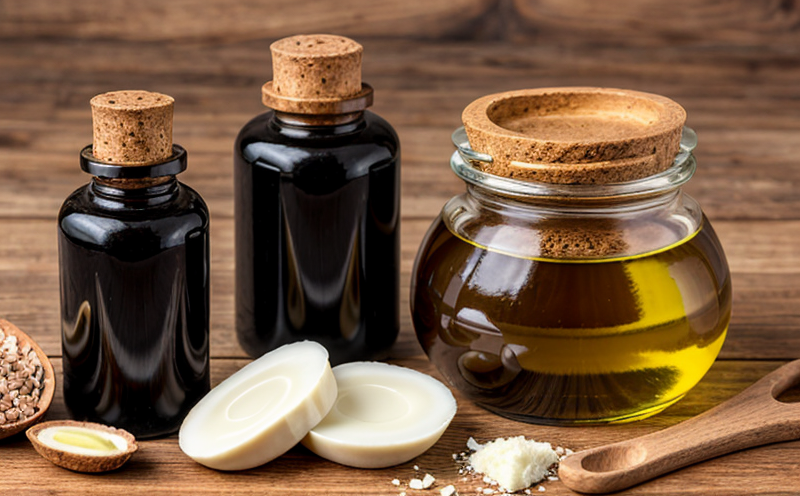EN 17042 Shelf Life and Oxidative Stability Testing in Oils
The European Standard EN 17042 specifies procedures to determine shelf life and oxidative stability of fats, oils, and similar products. This service is essential for ensuring the quality, safety, and longevity of food and feed ingredients used across various sectors including dairy, bakery, confectionery, and pet food manufacturing.
The shelf life testing according to EN 17042 involves simulating real-world storage conditions such as temperature and humidity. This helps in predicting how long a product can be stored before it degrades significantly. Oxidative stability is crucial for understanding the potential for rancidity, which can lead to off-flavors or other quality issues.
Testing parameters include monitoring key indicators like peroxide value (PV), p-anisidine value (PAN), and thiobarbituric acid reactive substances (TBARS) over time. These tests are conducted under controlled conditions that mimic actual storage environments, allowing for precise prediction of product performance in the field.
Preparation of specimens involves standardizing samples to ensure consistency. This includes homogenization of fats and oils prior to testing. The use of appropriate containers and sealing methods is also critical to maintain integrity throughout the test duration.
The analytical instruments used for these tests include gas chromatographs (GC), high-performance liquid chromatographs (HPLC), and spectrophotometers. These tools provide accurate measurements necessary for interpreting results accurately.
Acceptance criteria defined by EN 17042 outline the acceptable limits of oxidation products that indicate whether a product meets quality standards at various stages during its shelf life. Compliance with these criteria ensures that manufacturers can reliably predict and manage their products' performance in the marketplace.
This service is vital for maintaining consistent product quality, ensuring regulatory compliance, and enhancing consumer trust. By accurately predicting shelf life and oxidative stability, food and feed producers can optimize production processes, extend storage durations where appropriate, and reduce waste due to spoilage or off-flavors.
Applied Standards
| Standard Number | Description | Date of Publication |
|---|---|---|
| EN 17042-1 | Determination of the shelf life and oxidative stability of fats, oils, and similar products. Part 1: General principles. | 2013-05-15 |
| EN 17042-2 | Determination of the shelf life and oxidative stability of fats, oils, and similar products. Part 2: Methods for determining shelf life. | 2013-05-15 |
| EN 17042-3 | Determination of the shelf life and oxidative stability of fats, oils, and similar products. Part 3: Methods for determining oxidative stability. | 2013-05-15 |
The standards listed above provide comprehensive guidelines on how to conduct shelf life and oxidative stability tests in accordance with EN 17042. Compliance with these standards ensures accurate testing procedures and reliable results.
Benefits
Adopting EN 17042 Shelf Life and Oxidative Stability Testing offers numerous benefits to food and feed manufacturers:
- Enhanced Product Quality: Predicts the point at which products will start deteriorating, allowing for timely adjustments in production and storage practices.
- Increased Consumer Trust: Reliable shelf life predictions contribute to higher consumer confidence in product quality and safety.
- Improved Regulatory Compliance: Ensures adherence to international standards, reducing the risk of non-compliance penalties.
- Cost Savings: Reduces waste due to spoilage or off-flavors by optimizing storage conditions and durations.
- Innovation Support: Provides valuable data that can be used in developing new formulations with extended shelf life and improved oxidative stability.
These benefits translate into better business outcomes, including increased market share and enhanced brand reputation.
Environmental and Sustainability Contributions
The implementation of EN 17042 Shelf Life and Oxidative Stability Testing plays a significant role in promoting environmental sustainability:
- Avoidance of Waste: By accurately predicting shelf life, manufacturers can reduce the amount of wasted food and feed products due to spoilage.
- Resource Efficiency: Optimizing storage conditions based on test results ensures that resources are used efficiently throughout the supply chain.
- Energy Savings: Proper management of storage durations and conditions can lead to reduced energy consumption associated with maintaining optimal temperature and humidity levels.
- Carbon Footprint Reduction: Minimizing waste through accurate shelf life prediction contributes to lower carbon emissions across the entire production process.
Incorporating these practices into daily operations supports broader sustainability goals, contributing positively to environmental stewardship.





